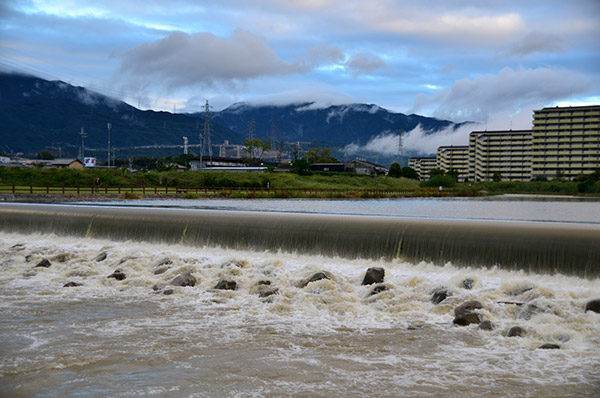News
Highly Precise Rain Forecast Developed through Supercomputers Updated in August 2020
Damages from heavy rainfall are becoming more frequent and crucial. It is scientifically rational to say that heavy rain occurs more often as global warming intensifies. When we take a look at the precipitation data accumulated over the past century from 51 locations throughout Japan, the first 3 decades at the beginning of the 20th century (1901-1930) and the 3 most recent decades (1977-2006) showed signs of heavy rain. Professor Taikan Oki from Institute of Industrial Science, University of Tokyo who is the supervising author of the 5th report of Intergovernmental Panel on Climate Change (IPCC), gave the following comment in a symposium:
“During the 20th century, heavy rain of 77 mm/hour had occurred once every 100 years. Rainfall of 82mm/hour had occurred every 200 years. From accumulated data, we can predict intense rainfall to be more frequent in the 21st century due to rise in temperature. For example, rainfall of 84mm/hour could occur every 100 years.”

What does this imply? “It is wrong to overlook the 10% increase from 77 mm to 84 mm,” warns Professor Oki. Typhoon Etau which hit central and northeastern Japan in September 2015, had flooded the embankment at Kinugawa River, resulting in catastrophic damage in local areas. According to the professor, the normal water depth of Kinugawa is 4 to 6 meters. A mere 20cm increase in depth led to the overflow. Therefore, a 10% increase in rainfall is extremely critical for river safety administrators.
In addition to heavy rain caused by typhoons and storms, abrupt and unexpected torrential rain or “guerrilla rain” (as the Japanese media would like to call it) is raising serious concern. Fast and accurate forecast is expected. Speaking with Group Leader, Ryo Onishi of Earth Simulation Research and Development Group at Japan Agency for Marine-Earth Science and Technology (JAMSTEC), I was able to find out what types of researches are contributing to accurate forecasts.
When cloud particles of about 10 microns (1 micron is 1/1000 millimeter) get supersaturated, a drop of water forms around its nucleus made of fine dust particles. In the beginning, the droplets of water expand by condensing and it comes down as rain shower when the diameter reaches 100 microns. Rarely, a 1mm diameter droplet could cause pouring rain. It sounds rational, but some scientific evidence is missing.
The size of droplets increases from condensation, but only at the start. It can never grow into a large raindrop by merely condensing because the mass of raindrop increases by cubing its diameter. As the droplets increase in size, the growth speed slows down. If you think under the assumption that growth solely occur from condensation, it would take several hours or one whole day for the cloud particle to grow from 10 microns to 100 microns.
In reality however, it will only take 20-30 minutes for a cloud particle to grow into a raindrop. In order to rationalize the phenomena of sudden rain or squalls, we have to find a completely different angle. Perhaps droplets sitting next to each other may merge or coalesce to create a bigger raindrop. Dr. Onishi had eyed air turbulence as the possible culprit of rapid raindrop growth. Because Dr. Onishi had initially majored in mechanical engineering, he was very used to the notion of air turbulence. Through endless amounts computing and simulation, he backed up the fact that cloud particles could immediately turn into raindrops.
“Earth Simulator,” the supercomputer at JAMSTEC, which contributed a great deal in compiling the global warming forecast for IPCC, was used to undertake this great task. After having gone through its second update in March 2015, its accuracy improved tenfold and its performance had improved 32 times compared to the time of its inception.
By using the Earth Simulator, Dr. Onishi’s group is now trying to develop a code that will allow a holistic forecast model that can specify rainfall for each city as well as the whole globe. Many elements like high-rise buildings in metropolitan cities would be taken into account to develop this code. When this code is developed, torrential rain could be detected immediately. More locally pinpointed flood forecasts could alert local areas for evacuation. (T.K)
Koiwai Tadamichi
Public Relations Advisor
China Research and Sakura Science Center
Japan Science and Technology Agency







